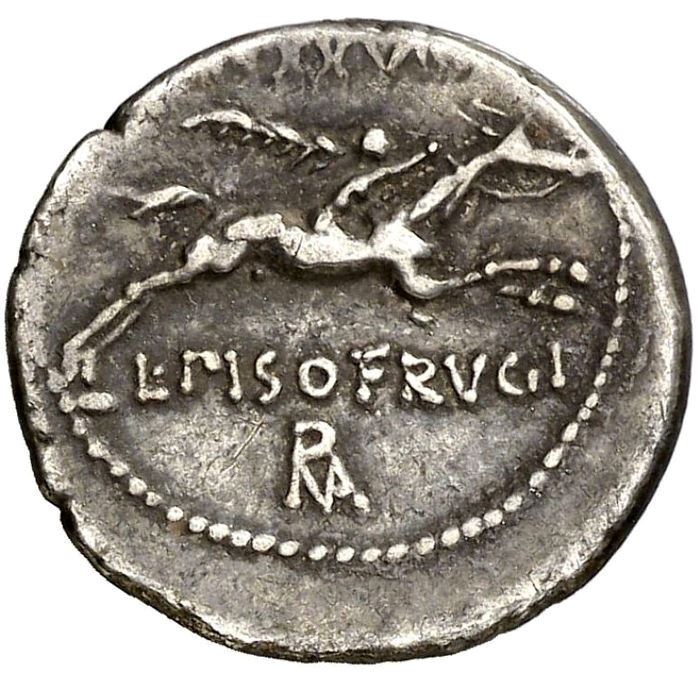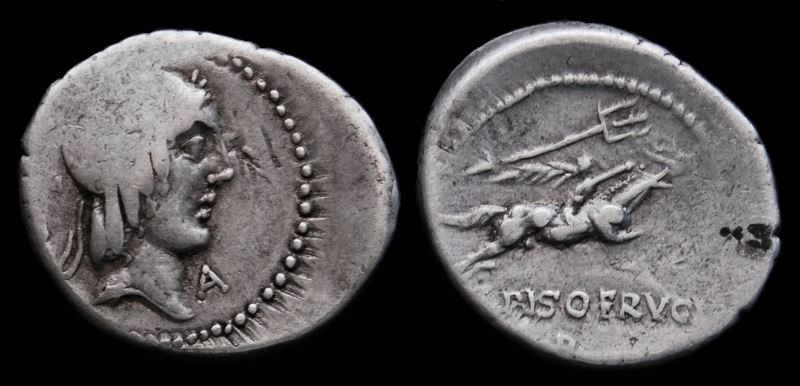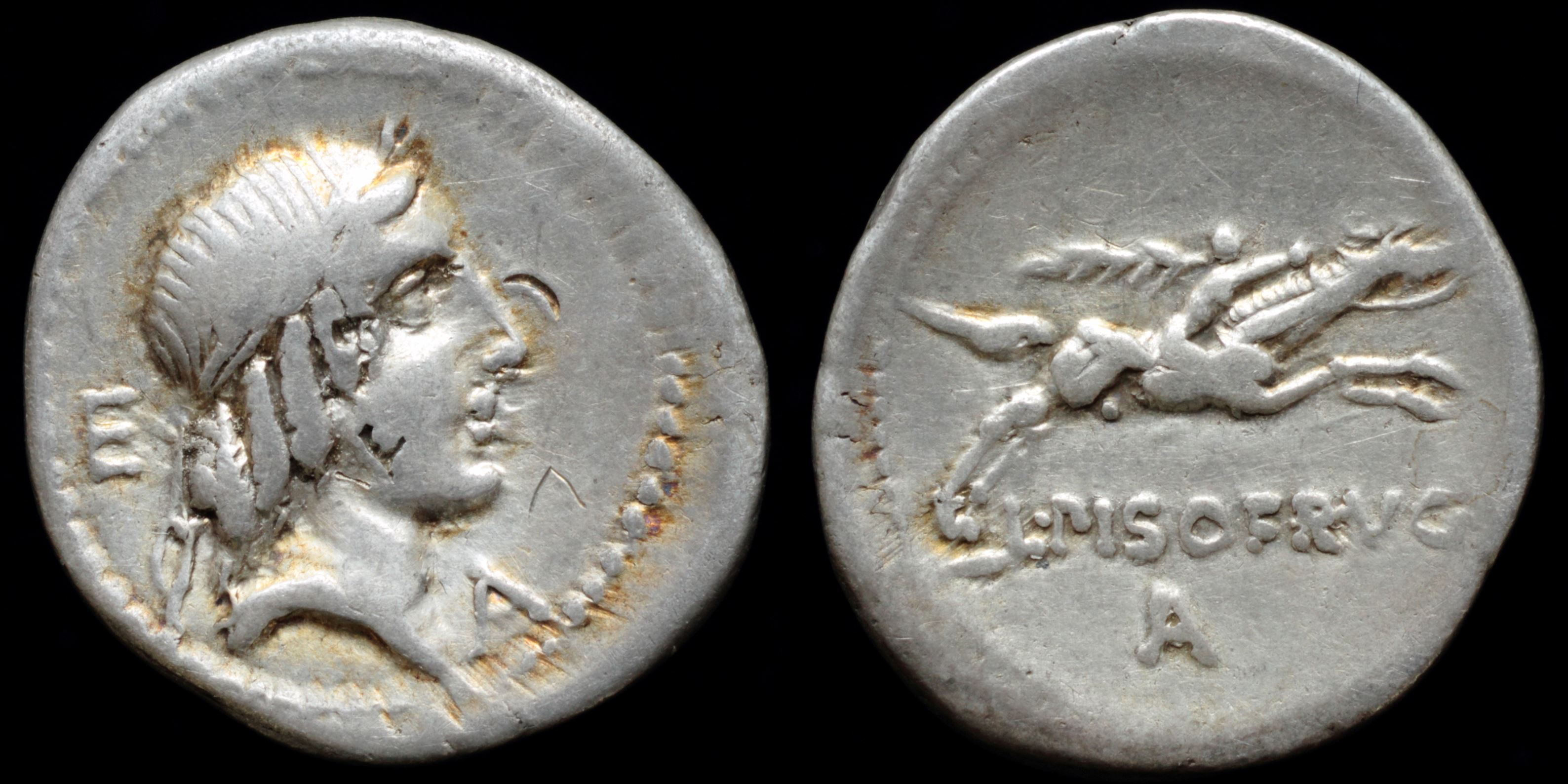Lucius Calpurnius Piso Frugi was a moneyer around 90 BC.
As praetor in 74, he vetoed many of the edicts issued by his colleague Verres, who was famously attacked by Cicero in the speeches known as the Verrines.
As praetor in 74, he vetoed many of the edicts issued by his colleague Verres, who was famously attacked by Cicero in the speeches known as the Verrines.


Obverse: Laureate head of Apollo right, trident behind, control mark A below chin.
Reverse: Warrior riding horse right, holding palm frond and reins, above a trident right. L PISO FRUGI and control mark R in two lines below.
Diameter:
19 mm
Die Orientation: 1 H
Weight: 3.9 g
Die Orientation: 1 H
Weight: 3.9 g
Lucius Calpurnius Piso Frugi, a monetalis around 90 BC. As praetor in 74, he vetoed many of the edicts issued by his colleague Verres, who was famously attacked by Cicero in the speeches known as the Verrines.
Crawford 340/1, Sydenham 669f, Calpurnia 11.

Obverse: laureate head of Apollo right, E / A
Reverse: Horseman holding palm branch galloping right L·PISO FRVGI / A
Diameter:
19 mm
Die Orientation: -
Weight: 3.8 g
Die Orientation: -
Weight: 3.8 g
Issue commemorates Ludi Apollinares which was held by moneyer's ancestor L. Calpurnius Piso in 212 BC for the first time. It's the most extensive republican issue. There is more than 300 variant of this coin.
Crawford 340/1, RSC I Calpurnia 11, SRCV I 235

Obverse: Laureate head of Apollo right, club (control mark) in left field.
Reverse: Victory advancing right, holding wreath and palm-branch, L PI - SO across fields, FRVGI in exergue.
Diameter:
14 mm
Die Orientation: -
Weight: 2.16 g
Die Orientation: -
Weight: 2.16 g
"Introduced as part of the currency reform of 211 BC, the silver quinarius was initially tariffed at one half of a denarius and five copper asses. Along with the silver sestertius, it ceased to be regularly minted after about 208 BC and was struck only sporadically thereafter. The periodic strikings that did occur were intended to facilitate trade with the Celtic tribes in Gaul and Britain, who seemed to appreciate the coin's small size and even struck their own imitations of Roman quinarii. The issue of L. Piso Frugi in 90 BC complemented that moneyer's enormous output of denarii, which helped finance the Social war raging in Italy."
Provenance: Naville Numismatics, Auction 42 (22 July 2018), lot 422. Ex Sternberg Auction 18 (20 November 1986), lot 323.
Provenance: Naville Numismatics, Auction 42 (22 July 2018), lot 422. Ex Sternberg Auction 18 (20 November 1986), lot 323.
Crawford 340/2e
